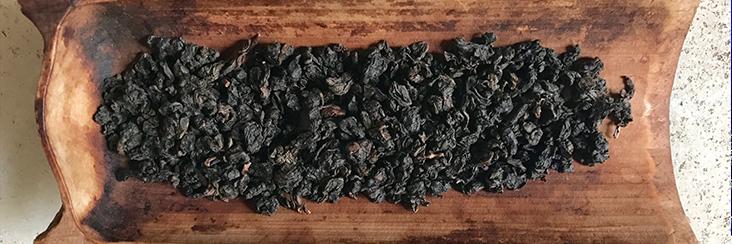
Tieguanyin Oolong Tea Tasting Notes | Eco-Cha Tea Club

Shown above in our well-used bamboo tea scoop are tea leaves cured in perhaps the most traditional fashion that has survived into the 21st century Taiwan tea industry. Not only were they sourced in one of the most historical tea growing regions in Taiwan, they were cultivated and cured in an overall context that is now very rare. It is rare because it is one of the few remaining resources of heirloom Tieguanyin tea trees, and it is cultivated organically, and it is processed in the smallest home-style tea factory we've ever seen.

In many cases, traditional styles of tea making involve much more "curing" of the tea leaves that has the dual purpose of bringing out a strong, distinct character, and stabilizes the tea leaves to maintain its flavor — giving it a prolonged shelf life as well as a discernible profile. In this sense, Tieguanyin Oolong is a prime example of a traditional product of regional origin. Initially brought from mainland China, this tradition took root in Northern Taiwan in the 1800's, and it has survived to this day.

Tieguanyin Oolong tea is traditionally a heavily oxidized, heavily roasted tea, that in effect puts it in its own flavor profile. It is distinctly different from all other tea types produced in Taiwan, regardless of region or tea strain. This tea is unique due to its curing methods. One step in particular sets Tieguanyin apart from the processing methods of other Oolong types. After the "kill green" or "cease oxidation" step —where the leaves are exposed to high heat —is done, they are partially rolled and dried, and then put in the roasting oven while still in the cloth wrapped balls shown above, and slightly "steamed in their own juices". This results in a subtle, tangy fermented character that makes Tieguanyin unique. This anomaly of tea processing methods in Taiwan, combined with heavy oxidation and heavy roasting give Tieguanyin Oolong is bold, rich and distinguished character.


